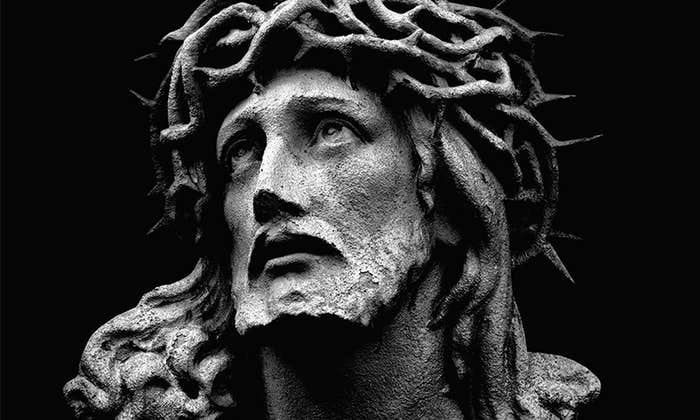The challenge that the multiverse poses for the idea of an all-good, all-powerful God is often focused on fine-tuning. If there are infinite universes, then we don’t need a fine tuner to explain why the conditions of our universe are perfect for life, so the argument goes. But some kinds of multiverse pose a more direct threat. The many-worlds interpretation of quantum physicist Hugh Everett III and the modal realism of cosmologist Max Tegmark include worlds that no sane, good God would ever tolerate. The theories are very different, but each predicts the existence of worlds filled with horror and misery.
Of course, plenty of thoughtful people argue that the Earth alone contains too much pain and suffering to be the work of a good God. But many others have disagreed, finding fairly nuanced things to say about what might justify God’s creation of a world that includes a planet like ours. For example, there is no forgiveness, courage, or fortitude without at least the perception of wrongs, danger, and difficulty. The most impressive human moral achievements seem to require such obstacles.
Still, many horrifying things happen with nothing seemingly gained from them. And, Everett’s many-worlds and Tegmark’s modal realism both seem to imply that there are huge numbers of horrific universes inhabited solely by such unfortunates. Someone like myself, who remains attracted to the traditional picture of God as loving creator, is bound to find such consequences shocking, and will wonder just how strong the evidence is for these theories.

The many-worlds interpretation arises from a problem in quantum mechanics. The Schrödinger equation, the fundamental law of quantum theory, is a description of the evolving states of particles. But some of the states it predicts are combinations—“superpositions”—of seemingly incompatible states, such as a coin landing both on heads and tails. We can wonder: What explains the fact that we don’t ever observe the combined incompatible states, but only observe coins that land on heads or tails? One answer many theorists provide is that there is more going on than the Schrödinger equation describes. They add a process called “the collapse of the wave function,” which results in a definite outcome of heads or tails.
But in the 1950s, Everett proposed a bold alternative. His theory has no collapses, but instead holds that all the parts of these combined—or “superposed”—states occur as parts of equally real but relatively isolated worlds. There are some complete copies of the universe in which the coin lands heads, and in others tails. And this applies to all other physical states—not just flipping coins. There are some universes where you make the train and get to work on time, and others where you don’t, and so on. These slight differences create multiple overlapping universes, all branching off from some initial state in a great world-tree.
Everett’s many-worlds and Tegmark’s modal realism both seem to imply that there are huge numbers of horrific universes.
Old-fashioned quantum theory assigns a tiny likelihood to things going really badly in the future. It also implies that, from any point in our actual past, things could have gone much worse than they actually did. Since the many worlds interpretation takes these possibilities as actual occurrences, it predicts that there are branching universes in which things do go as awfully as possible.
For example, whenever there is a minute chance of a catastrophe that leaves all human beings utterly miserable but just barely healthy enough to reproduce, there is a branch in the world-tree in which this sorry state of affairs actually happens, generation after generation. So there are worlds in which the emergence of the human race proves to be an unmitigated tragedy—or so it seems.
A religious Everettian might hope that God would just prune the tree, and leave only those branches where good triumphs over evil. But as the philosopher Jason Turner of the University of Arizona has pointed out, such pruning undermines the Schrödinger equation. If God prevents the worst universes from emerging on the world-tree, then the deterministic law would not truly describe the evolution of the multiverse. Not all the superposed states that it predicts would actually occur, but only those that God judges to be “good enough.”
Even if the pruning argument doesn’t work, there is another reason to think that the many-worlds interpretation doesn’t pose a serious threat to belief in God. Everett’s multiverse is just a much expanded physical world like this one, and finding we were in it would be like finding we were in a world with many more inhabited planets, some the amplified versions of the worst parts of our planet and others the amplified versions of the best parts. And so, even the worst parts of an Everettian multiverse are just particularly ugly versions of planet Earth. If an afterlife helps to explain our seemingly pointless suffering, then it would help explain the seemingly pointless suffering in even the worst of these Everett worlds, if we suppose that everyone in every branch, shows up in an afterlife.
A theist may also take comfort in the fact that the many-worlds interpretation is still far from scientific orthodoxy. Although beloved by Oxford philosophers and accepted by a growing number of theoretical physicists, the theory remains highly controversial, and there are fundamental problems still being hashed out by the experts.
The Everettian multiverse contains worlds that are hard to reconcile with a good God, but Tegmark’s multiverse might contain the worst. His theory, from his 2014 book Our Mathematical Universe, isn’t anchored in quantum mechanics but in modal realism, the doctrine proposed by philosopher David Lewis that every possible way that things could have gone—every consistent, total history of a universe—is as real as our own universe.
Most philosophers talk about possible worlds as abstract things, like numbers, located outside of space and time, and as if they are very different from the actual world, which is substantial and made out of good old-fashioned matter. Tegmark agrees that other merely possible universes are abstract like numbers. But he denies that this makes them less real than the physical world. He thinks our universe is itself fundamentally a mathematical structure. Every physicist agrees that there is a set of mathematical entities standing in relations that perfectly models the distribution of fields and particles which a perfect physics would ascribe to our world. But Tegmark argues that our universe is identical to those mathematical things.
Tegmark’s theory implies there have to be worlds with short miserable lives and no afterlife.
If the world we inhabit is a purely mathematical structure, then all the other possible worlds we can imagine are equally real, their existence a necessary result of slightly different mathematical structures. For every possible way in which mathematical models dictate that matter can be consistently arranged to fill a spacetime universe, there exists such a universe.
These possible arrangements of matter are bound to include ones corresponding to miserable universes full of pointless suffering—universes like all of the worst branches in the Everettian world-tree, and infinitely many more just as bad. But there would also be worlds that are worse. Unlike Everett’s worlds that are generated by a physical theory, Tegmark’s worlds are generated by mere possibility, which he identifies with mathematical consistency.

According to Tegmark, every possible story about living creatures that can be told by means of a mathematical model of the underlying physical facts is a true story. This means that even if some of Tegmark’s universes last long enough to include episodes in which their inhabitants have an afterlife, the existence of mathematical structures with every possible shape and size requires shorter worlds, too. And, infinitely many of these worlds will not last long enough for their inhabitants to enjoy an afterlife.
There is one way, then, in which Everett’s multiverse poses less of a challenge to the theist than Tegmark’s. Everett’s theory doesn’t predict that God won’t do anything for people with short, miserable lives, and it doesn’t predict that God won’t somehow compensate them in an afterlife. Rather, it only predicts that there will be many more short, miserable lives than just the ones in our universe; whereas Tegmark’s theory implies that there have to be worlds in which there are short miserable lives and no afterlife.
Adding insult to injury, since the horrifying worlds are consequences of pure mathematics, they exist as a matter of absolute necessity—so there is nothing God can do about it! The resulting picture will remain offensive to pious ears: A God who loved all creatures, but was forced to watch infinitely many of them endure lives of inconsolable suffering, would be a God embroiled in a tragedy.
But there is still hope for the theist.
Unlike the Everettian many worlds, which issue from experimental theories in physics and so are harder to dismiss, Tegmark’s theory is based on frail philosophical arguments. Take, for example, his claim that the physical universe is a purely mathematical structure: Why should we accept this? Ordinarily, physicists use mathematical structures as models for how the physical world might work, but they do not identify the mathematical model with the world itself. Tegmark’s reason for taking the latter approach is his conviction that physics must be purged of anything but mathematical terms. Non-mathematical concepts, he says, are “anthropocentric baggage,” and must be eliminated for objectivity’s sake. But why think that the only objective descriptions that can truly apply to things as they are in themselves are mathematical descriptions? So far as I can see, he never justifies this assumption. And such a counterintuitive starting point isn’t enough to threaten one’s belief in a benevolent God.
Apart from the threats posed by the awful worlds within the multiverses of Everett and Tegmark, the idea that we inhabit a multiverse doesn’t have to undermine a belief in God. Every theist should take seriously the possibility that there might exist more universes, simply on the grounds that God would have reason to create more good stuff. Indeed, an infinitely ingenious, resourceful, and creative Being might be expected to work on canvases the size of worlds—some filled with frenetic activity, others more like vast minimalist paintings, many maybe even featuring intelligent beings like ourselves. And the theories of physicists such as Alan Guth and Andrei Linde—whose multiverse is an eternally inflating field that spins off baby universes—or Paul Steinhardt and Neil Turok—whose multiverse amounts to an endless cyclical universe punctuated by big bangs and big crunches—are arguably compatible with this theological vision.
It may turn out that our world is fairly middling, one among the many universes that were good enough for God to create. And the idea of a multiverse consisting of disconnected spacetime universes may make it easier to believe that our world—our universe—is a part of a larger one that is on balance very good and created by a perfectly benevolent deity.
Dean Zimmerman is a professor of philosophy at Rutgers University. Follow him on Twitter @deanwallyz.
Lead Image: “Christ in Limbo,” Hieronymous Bosch
This article was originally published on Nautilus Cosmos in February 2017.






























